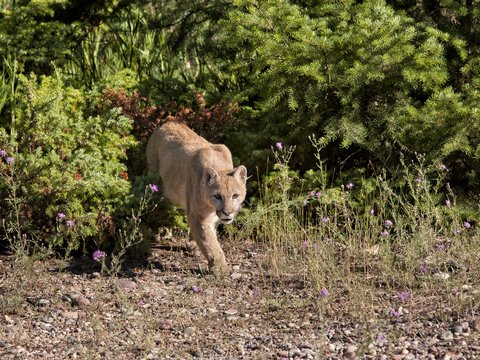
We here in North America get a little squirrely at the thought of not being at the top of the food chain, so naturally we are afraid of the things that could potentially eat us. Now being afraid is alright as long as you never intend to hike in the wilderness.
The reality is that, yes, there are places (National Parks even) where we might encounter a situation where we could get attacked. Rare as it is, it happens, usually when we forget our awareness skills.
One of the most incredibly sneaky animals out there is the mountain lion. These days, cougars are spotted in places where you’d never expect and the reason is quite simple—there are more people and more cats. From 2001 to 2008, there were only two deaths reported, but the attack rate averages about 5.6 per year.
A couple of years ago, here in Nevada City, California, a homeless fellow was sleeping beside the river in his sleeping bag and was torn up by a mountain lion who might of thought he was something other than human. He lived to tell about it. Sightings, on the other hand, are much more common. The bottom line is that there are mountain lions where most people hike and there are ways to decrease the chance of an encounter.
Awareness is the single best tool you have anywhere. There are many things that could hurt you in the wild and this simple tool should always be at the top of the list, even when walking down the street. When you are in the woods, everything knows you’re there and your awareness should be the same. Look around, listen and pay attention to signs. If it’s early morning or late evening, is it the best idea to explore that thickly covered game trail? Should you walk through quietly or make noise? There are a million different scenarios but awareness will always keep you on the same level as whatever may be hiding in the bushes.
The California Department of Fish and Game has some mountain lion guidelines. While it is pretty fear based, it has some valid points to consider. One thing is to try and hike in a group so you are more intimidating to a cougar. Another that I didn’t know was that cats are drawn to children. What? Keep the little guys close is the suggestion.
One of the most important things to know if you do have an encounter is NOT TO RUN. Ever see a cat catch a mouse? As soon as the mouse is too wounded to move, the cat loses interest. This is the rule with any predator including bears. Hold your ground, make yourself look as large as possible (hold your arms up or use your jacket) and the mountain lion will almost always retreat.
There was a study in Nepal that showed that you greatly increase your odds of attack if you are bent over (appearing to be a four-legged animal). Most, if not all predators are afraid of humans. Make sure he knows what you are. Try to remain calm (yeah right) and slowly back away, keeping your eye on the cat. And, God forbid, you get attacked, fight like hell. Many people, including children, have successfully fought off mountain lions with sticks, rocks and bare hands. Never give up!
The bottom line is that it is extremely rare to encounter a mountain lion and I have always been against fear-based ideas in nature. The truth is that the woods are safe, healing and friendly. My main motto has always been “expect the best, prepare for the worst.” The more you educate yourself about wild places and the more experience you build up, the more you will agree that there is almost always nothing to fear in the wild. Any seasoned outdoorsman would agree.
© Dssimages | Dreamstime.com – Mountain Lion On The Prowl Photo








